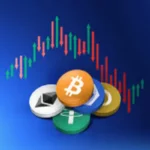What Is a DEX? Understanding Decentralized Exchanges in the World of Crypto

The core principle of decentralization drives innovation in the cryptocurrency world. DEX, or decentralized exchange, is familiar to crypto traders who have started trading. What exactly is a DEX, and why should you care? A DEX operates independently of middlemen, so you maintain complete control over your assets. There are distinctive features of DEXs, their operational mechanics, and their impact on modern trading practices.
The Basics: What Is a Decentralized Exchange?
A decentralized exchange (DEX) functions as a trading platform that allows cryptocurrency users to exchange assets directly through blockchain technology without any central authority oversight. Users can trade cryptocurrencies directly from their wallets through blockchain-based DEXs instead of using centralized exchanges like Coinbase or Binance. The system provides complete asset control, which improves safety measures and gives users maximum freedom.
The trading operations of DEX platforms rely on smart contracts, which execute automatically on the blockchain network. Smart contracts on these platforms link buyers to sellers and perform transaction management and system maintenance without human intervention. The core crypto principle of user financial autonomy becomes evident through DEXs because they eliminate middlemen from trading operations.
How Does a DEX Work?
DEXs operate on blockchain networks, including Ethereum and Binance Smart Chain, and Solana. Users need to link their crypto wallet, such as MetaMask or Trust Wallet, to the platform before initiating trades. Your assets remain secure in your wallet throughout the trading process because decentralized exchanges do not require fund deposits into their system.
The process of how to use a DEX proves easier than most people expect. Begin by linking your wallet to platforms such as Uniswap or SushiSwap. Choose your token pair starting with ETH and USDT before specifying the trade amount and finalizing the transaction. The platform interface provides step-by-step guidance through the process while showing real-time price estimates and gas fee information. New users should begin with minimal trades to learn the system while understanding wallet protection measures and transaction expenses.
DEXs primarily use two models: Automated Market Makers (AMMs) and order books. AMMs, like those on Uniswap, rely on liquidity pools of tokens provided by users (liquidity providers) who deposit pairs of assets. When you trade, the AMM algorithm sets prices based on the token ratio in the pool, making trades instant but sensitive to pool size and demand. Order book DEXs, like dYdX, match buy and sell orders like traditional exchanges, but still use blockchain for transparency. AMMs dominate due to their simplicity and ease of use.
Why Use a DEX? The Benefits
DEXs bring a host of advantages that attract crypto traders. Security tops the list. Since you keep control of your funds, the risk of hacks or exchange mismanagement plummets. Centralized exchanges have suffered major breaches, costing users millions, but with a DEX, your private keys stay yours, minimizing exposure.
Privacy is another draw. Centralized platforms often require KYC (Know Your Customer) verification, demanding IDs or addresses. DEXs typically skip this, letting you trade anonymously with just a wallet. This aligns with blockchain’s pseudonymous ethos.
DEXs also promote financial inclusion. Anyone with internet access and a wallet can trade, no matter where they are. This is a boon in regions with limited banking access. Plus, DEXs often list niche or new tokens unavailable on centralized platforms, giving you more trading options.
The Challenges of DEXs
DEXs aren’t flawless. Liquidity can be an issue—while giants like Uniswap have robust pools, smaller DEXs may face slippage, where the executed price differs from the quoted one, especially for large trades. Transaction fees, or “gas fees,” also pose challenges, particularly on Ethereum during peak times. However, layer-2 solutions like optimism and blockchains like Solana are cutting costs, making DEXs more affordable.
The initial experience of using a DEX can be overwhelming. The process of wallet setup and blockchain transaction management appears more complicated than the user-friendly interfaces of traditional centralized platforms. Most users discover DEXs to be easy to use after practice, as platform design improvements continue to improve the user experience.
DEXs and the Future of Finance
DEXs serve as fundamental components of decentralized finance (DeFi), which transforms our financial interactions. DEXs work without middlemen, making them trustless systems that stay transparent and secure. They do more than just trading—they also offer yield farming, staking, and lending services for crypto fans.
The development of blockchain technology leads to DEXs that operate faster while becoming less expensive and more accessible to users. Cross-chain DEXs function as bridges to facilitate trades between different blockchain networks, which removes trade restrictions. The decentralized nature of DEXs makes them difficult to control because they operate through community-driven governance structures while governments struggle to establish oversight of these systems.
Conclusion
Decentralized exchanges operate as more than just trading platforms because they establish a financial system that prioritizes user management and security, and inclusivity. The blockchain and smart contract technology enable users to perform trades directly from their wallets without needing any intermediaries or their associated risks. The persistence of fees and liquidity challenges continues to exist, but daily innovations improve the accessibility of DEXs.
Both beginners in crypto and experienced traders can benefit from using a DEX to access new trading opportunities. These platforms provide users with a chance to experience the future of finance through their ability to swap unique tokens and access DeFi opportunities. Start by connecting your wallet, then start with small transactions to experience the power of decentralization.







